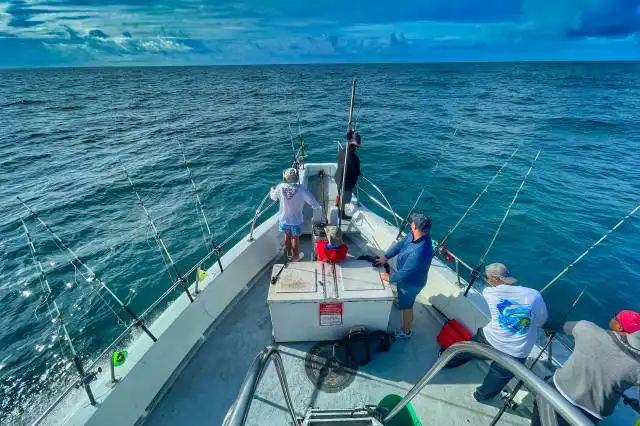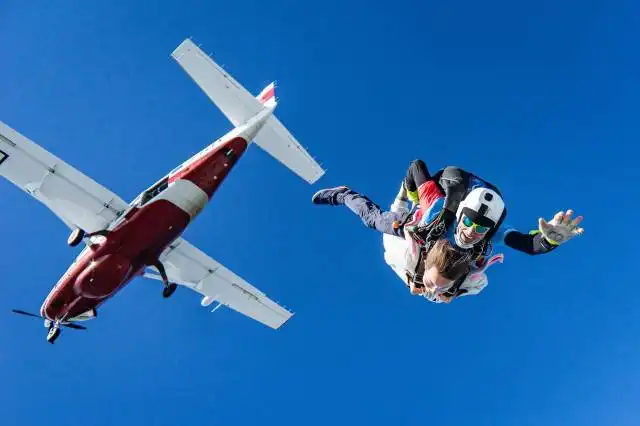Start a Ski Resort
Gliding into Entrepreneurship: The Thrill of Owning a Ski Resort
| Updated


SKI RESORT
Taking a plunge into the world of ski resorts is like strapping on a pair of skis and gliding down the thrilling slopes of entrepreneurship! This venture, undoubtedly enticing, involves renting out ski equipment and providing skiing facilities and amenities like ski lifts and accommodation. Imagine your business majestically perched on snowy peaks, offering adrenalin-fueled adventures to skiing novices and expert thrill-seekers alike. For those who love the chill of winter and the thrill of the descent, a ski resort is your golden ticket into the fascinating world of frost-bound entrepreneurship.
Jump to Business Plan
RELATED BUSINESS IDEAS
Browse ALL Hospitality & Leisure Ventures Business Ideas
Discover Your Perfect Domain
Unlock the door to your online success with our hand-picked selection of premium domain names. Whether you're starting a new venture or rebranding an existing one, the right domain can set the tone for your digital presence. Browse through our curated list, each with its unique potential to enhance your brand's visibility and credibility.
SKI RESORT MINI BUSINESS PLAN
This a quick reality check to help you identify the strengths and weaknesses of your business concept before you dive in.
Expected Percent Margin:
- Gross Margin: 30-40%
- Net Profit Margin: 5-15%
Earnings Expectations:
- Daily Earnings: $2,000 - $5,000
- Weekly Earnings: $14,000 - $35,000
- Monthly Earnings: $60,000 - $150,000
- Annual Earnings: $720,000 - $1,800,000
Keep in mind these earnings are predicted for peak season (winter). During off-peak months, earnings may significantly decrease.
Actions to Hit Those Numbers:
Resort Management:
- Initial Investment: Your upfront cost will need to be large — potentially millions — to account for land, equipment, and ensuring the resort is up to code.
- Maintenance of equipment and slopes: This is another significant cost area. Have a dedicated team for regular check-ups and maintenance of ski lifts and grooming of trails.
Marketing and Customer Attraction:
- Season Passes: Offer appealing season pass packages to secure upfront cash flow and encourage repeat visits.
- Reach Out to Group Customers: Market to schools, corporations and clubs who may wish to rent out facilities or take group lessons.
- Online Presence: Ensure you have a strong online presence with clear information about your resort, events, conditions, and prices.
Employee Management and Training:
- Staffing: Employ sufficient staff including ski instructors, maintenance crew, customer service, etc. Pay attention to peak season for hiring.
- Training: Train staff to ensure safety and enhance customer service.
Cost Control:
- Energy Use: Running a ski resort requires significant energy. Innovations in this area could lead to major cost savings.
- Insurance: Ensure you have comprehensive insurance as the risk of injury can be high, which could lead to lawsuits.
Operations:
- Non-Winter Activities: Consider additional revenue streams for the off-peak seasons (mountain biking, hiking, etc.).
- Diversify Your Offerings: Offer equipment rental, dining options, and lodging to increase your revenue per customer.
Again, these margins and earnings expectations can vary significantly depending on factors like location, competition, and tourist draw. Always consult with a financial advisor for personalized advice.
NOT WHAT YOU HAD IN MIND? Here are more ideas



Browse ALL Hospitality & Leisure Ventures Business Ideas
Grab Your Business Website Name
Before you get caught up in the whirlwind of setting up your business, invest in a domain name. It's a small but significant step that lays the foundation for your brand and makes it easier for customers to find and trust you. Just like you wouldn't build a house without securing the land first, don't build a business without securing your domain name.
"Why? Can't that wait?" Here's why it shouldn't
Step 1: Determine if the Business is the Right Endeavor
Breakdown of Startup Expenses
Before starting a ski resort, it is important to understand the costs associated with the business. This includes the cost of land, buildings, equipment, and other necessary items. It is also important to consider the cost of labor, taxes, and insurance. Additionally, it is important to consider the cost of marketing and advertising to attract customers. Finally, it is important to have a good understanding of the local regulations and zoning laws to ensure that the business is compliant.
Breakdown of Ongoing Expenses
Once the ski resort is up and running, there are ongoing expenses to consider. These include the cost of labor, taxes, insurance, and other necessary items. Additionally, it is important to consider the cost of marketing and advertising to attract customers. It is also important to consider the cost of maintenance and repairs for the equipment and buildings. Finally, it is important to consider the cost of utilities, such as electricity and water.
Examples of Ways to Make Money
There are a variety of ways to make money with a ski resort. These include lift ticket sales, ski and snowboard rentals, food and beverage sales, and retail sales. Additionally, the ski resort can offer lessons and activities, such as tubing and snowshoeing. Additionally, the ski resort can offer special events, such as races and competitions. Finally, the ski resort can offer lodging and other amenities, such as a spa or restaurant.
Step 2: Name the Business
Naming a business is an important step in the process of starting a ski resort. It is important to choose a name that is memorable, unique, and reflects the business’s mission. Additionally, it is important to make sure that the name is not already in use by another business. To ensure that the name is not already in use, it is important to do a trademark search. This can be done through the United States Patent and Trademark Office website. Additionally, it is important to make sure that the domain name is available for the business. This can be done by searching the domain name on a website such as GoDaddy.com. It is also important to make sure that the business name is easy to spell and pronounce. This will make it easier for customers to find the business online and in person. Finally, it is important to make sure that the name is not too long or complicated. This will make it easier for customers to remember the name and for the business to be found in search engines.
Step 3: Secure Funding
The third step in starting a ski resort is to secure funding. There are a variety of sources of funding that can be used to finance a ski resort. These include traditional financing from banks, venture capital, private equity, and other sources. Additionally, the ski resort may be eligible for government grants and other incentives. It is important to research all available sources of funding to ensure that the ski resort has the necessary capital to get off the ground.
Business Plan
In order to secure funding, it is important to have a well-developed business plan. The business plan should include a detailed description of the ski resort, its goals, and the strategies that will be used to achieve those goals. Additionally, the business plan should include financial projections, a marketing plan, and a risk management plan. A comprehensive business plan will help to convince potential investors that the ski resort is a viable investment.
Budget
It is also important to create a budget for the ski resort. The budget should include all of the expected startup costs, such as land acquisition, construction, and equipment. Additionally, the budget should include ongoing expenses such as staffing, marketing, and maintenance. A budget will help to ensure that the ski resort is financially viable and that it has the necessary capital to remain operational.
Step 4: Choose a Location
When choosing a location for a ski resort, there are several factors to consider. First, the location should be close to a large population center, as this will make it easier to attract customers. Additionally, the location should have access to a reliable source of snow, such as a mountain range or a lake. The location should also have access to nearby amenities, such as restaurants, hotels, and other attractions. Finally, the location should be large enough to accommodate the resort’s needs, such as ski runs, lifts, and parking.
Researching Potential Locations
Once the ideal location has been identified, it is important to research the area thoroughly. This includes researching the local laws and regulations, as well as the local climate and weather conditions. Additionally, research should be done to determine the local competition, as well as any potential opportunities for collaboration. It is also important to research the local economy and population, as this will help determine the potential customer base. Finally, research should be done to ensure that the land is available for purchase or lease.
Step 5: Create a Business Plan
Creating a business plan is a critical step in starting a ski resort. A business plan should include a description of the business, a market analysis, a competitive analysis, a description of the management team, a financial plan, and a marketing plan.
The description of the business should include the name of the business, the location, the type of business, the services offered, and the target market. This should also include a mission statement and a vision statement.
The market analysis should include an analysis of the local market, the regional market, and the national market. This should include an analysis of the potential customers and their needs, the competition, and the potential for growth.
The competitive analysis should include an analysis of the competitors in the area and their strengths and weaknesses. This should include an analysis of the pricing structure, the marketing strategies, and the customer service offered.
The description of the management team should include the qualifications and experience of the management team, the roles and responsibilities of each team member, and the compensation structure.
The financial plan should include a breakdown of the startup expenses, the ongoing expenses, and the projected profits. This should include a budget for the first year of operations, a cash flow projection, and a break-even analysis.
The marketing plan should include a description of the marketing strategies that will be used to attract customers. This should include an analysis of the target market, the marketing channels that will be used, and the budget for marketing.
Step 6: Obtain Necessary Licenses and Permits
In order to start a ski resort, there are several types of licenses and permits that must be obtained. Depending on the location of the resort, the types of licenses and permits needed may vary. Generally, a business license, a zoning permit, a health permit, and a liquor license are required. It is important to research the specific requirements of the local government in order to ensure that all necessary licenses and permits are obtained.
How to Obtain Licenses and Permits
Once the types of licenses and permits needed have been determined, the next step is to obtain them. This can be done by contacting the local government office and submitting the necessary paperwork. Depending on the location, the process of obtaining the licenses and permits may take several weeks or even months. It is important to plan ahead and start the process as soon as possible in order to avoid any delays in the opening of the ski resort.
Cost of Licenses and Permits
The cost of obtaining the necessary licenses and permits will vary depending on the location of the ski resort. Generally, the cost of the licenses and permits will range from a few hundred dollars to several thousand dollars. It is important to research the cost of the licenses and permits in advance and factor them into the overall budget of the ski resort.
Benefits of Obtaining Licenses and Permits
Once the necessary licenses and permits have been obtained, the ski resort will be able to operate legally and in accordance with the local laws and regulations. This will help to ensure that the ski resort is able to provide a safe and enjoyable experience for its customers. Additionally, having the necessary licenses and permits will help to protect the ski resort from any potential legal issues that may arise.
Step 7: Hire Employees
When it comes to hiring employees for a ski resort, it is important to find individuals who are passionate about skiing and the outdoors. It is also important to find employees who are knowledgeable about the area and can provide customers with helpful information. Additionally, it is important to find employees who are friendly and customer service oriented. To ensure the best possible employees, it is important to conduct thorough interviews and background checks.
Training
Once the employees have been hired, it is important to provide them with adequate training. This should include safety protocols, customer service training, and training on the ski resort’s policies and procedures. Additionally, it is important to provide employees with training on the ski resort’s equipment and how to properly use it. This will help ensure that employees are able to provide customers with a safe and enjoyable experience.
Benefits
When it comes to hiring employees, it is important to provide them with benefits that will make them want to stay with the ski resort. This could include offering competitive wages, health insurance, and other benefits such as discounts on ski passes or ski equipment. Additionally, providing employees with a positive work environment and opportunities for growth can help to ensure that they remain loyal to the ski resort.
Employee Retention
Once the employees have been hired and trained, it is important to have a plan in place for employee retention. This could include offering incentives for employees who stay with the ski resort for a certain amount of time, or offering rewards for employees who go above and beyond in their duties. Additionally, providing employees with opportunities for advancement can help to ensure that they remain loyal to the ski resort.
Step 8: Market the Business
When it comes to marketing the business, there are a few strategies that can be employed. First, it is important to create a website for the ski resort. This website should include information about the resort, such as the location, amenities, and activities offered. Additionally, the website should include contact information and a way for customers to book reservations. Social media is also an important tool for marketing the business. Creating accounts on Facebook, Twitter, and Instagram can help to spread the word about the ski resort and attract more customers. Additionally, it is important to create a presence in the local community. This can be done by attending local events and festivals, as well as by advertising in local newspapers and radio stations.
Step 9: Monitor the Business
Analyzing Performance
Once the ski resort is up and running, it is important to monitor the performance of the business. This can be done by tracking the number of customers and the amount of revenue generated. Additionally, it is important to analyze customer feedback and reviews in order to identify areas of improvement. It is also important to stay up to date on industry trends and changes in order to remain competitive. Finally, it is important to review the financials of the business on a regular basis in order to ensure that the business is profitable.
Step 9: Monitor the Business
Monitoring the business is an important step to ensure the success of the ski resort. It is important to keep track of the financials and the customer feedback. Here are some tips for monitoring the business:
Keep track of the financials: It is important to keep track of the financials of the ski resort. This includes tracking the revenue, expenses, and profits. This will help to identify any areas of improvement and areas that need more attention.
Monitor customer feedback: Customer feedback is a great way to identify areas of improvement and areas that need more attention. It is important to monitor customer feedback and take action on any issues that customers may have.
Analyze the competition: It is important to analyze the competition to stay ahead of the game. This includes looking at their pricing, promotions, and customer service.
Stay up to date with industry trends: It is important to stay up to date with industry trends. This includes researching new technologies, customer preferences, and market trends.
Track marketing efforts: It is important to track the marketing efforts of the ski resort. This includes tracking the effectiveness of campaigns and promotions. This will help to identify areas of improvement and areas that need more attention.
EXPLORE MORE CATEGORIES
Browse ALL Business Idea Categories
TAKE THE NEXT STEPS










